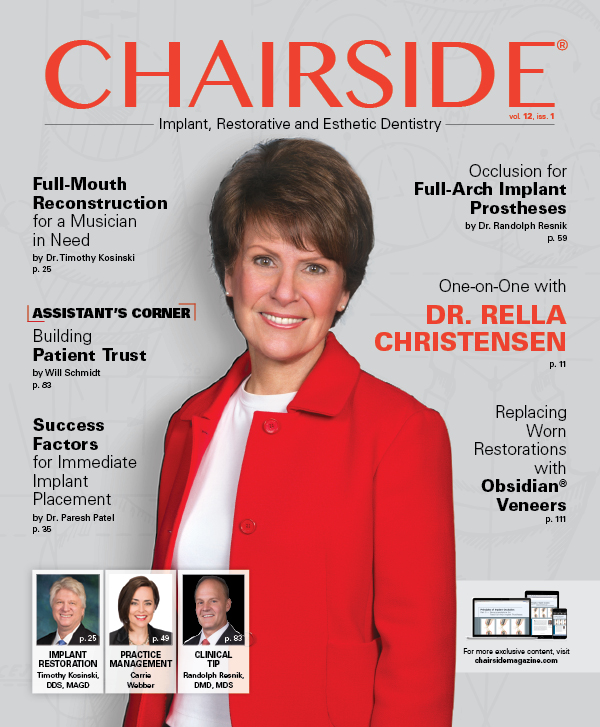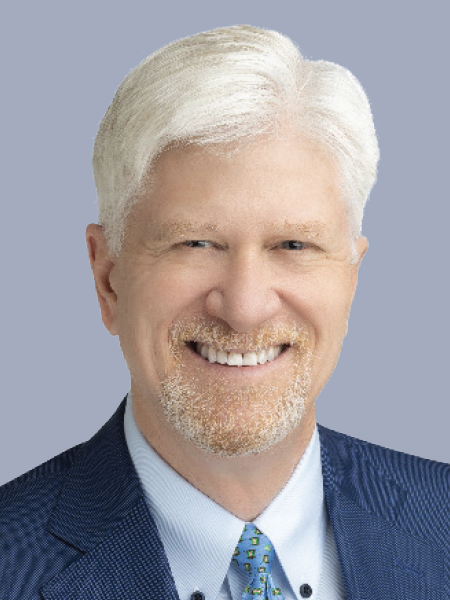Dual-Arch Reconstruction: A Rewarding Experience for Dentist and Musician Alike
Note: The Hahn Tapered Implant System is now known as the Glidewell HT Implant System
The dental profession provides opportunities for us to significantly improve the lives of our patients. On occasion, we are presented with a unique opportunity to use our distinctive skills and experience to assist members of our local communities who find themselves in need and without adequate resources to receive treatment. I was presented with such an opportunity when a dear friend and longtime patient, Lila, contacted me about a popular musician who performs at a nearby downtown Detroit bar. Lila called me and asked for a favor. Without even knowing what the favor would be, my immediate response was, “Sure, Lila, anything for you.”
She proceeded to tell me about Carl Brooks, a talented artist. She heard him sing and play guitar one evening — and he was amazing. But his teeth were the worst she’d ever seen. She believed he deserved a smile to complement his stunning personality and asked me to “somehow” fix his teeth. I told her to have Carl call me for an evaluation.
Initially, I didn’t know much about Carl, except that he was a driver for the Salvation Army during the week and an entertainer on the weekends. When he arrived at the office, his oral health was in bad shape, with no way to salvage any of his severely decayed and periodontally involved teeth. We discussed how his health was affected by the bacteria going into his bloodstream from the infected dentition. Carl knew he had major dental issues, but he just didn’t have the financial resources to take care of them. Like many patients who have neglected their teeth for a long while, he was embarrassed. He covered his mouth with his hand when he talked and avoided smiling, which is especially problematic for a professional singer. Also, he had an unpleasant experience with tooth extractions in the past, so he was apprehensive about dental procedures.
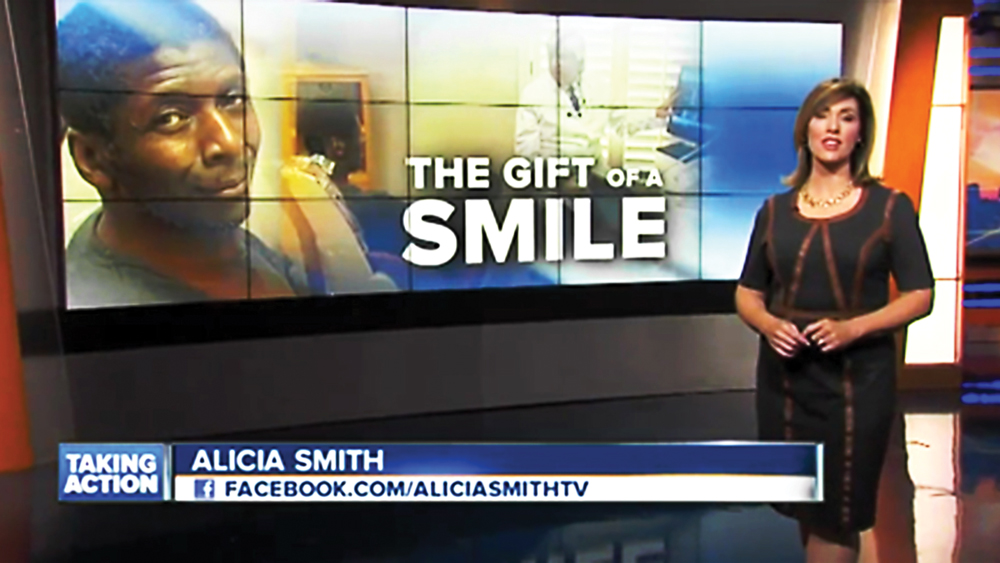

Carl’s life-changing implant treatment was covered by the TV station WXYZ Detroit for its “Pay It Forward” news segment.
When we are presented with charitable cases, we do not expect public recognition. Nevertheless, when news anchor Alicia Smith wanted to broadcast a local story about our expanding city of Detroit — and my practice’s effort to improve the quality of Carl’s life — I immediately agreed. Alicia, who covers human interest features on our local TV station WXYZ Detroit, believed Carl’s story would be a natural fit for the station’s “Pay It Forward” news segment. Before treatment began, she arrived with a camera crew and interviewed Carl about his experiences and my intentions to help him. I perform this type of treatment every day, so I was quite excited to share this case with her audience.
I perform this type of treatment every day, so I was quite excited to share this case with her audience.
TREATMENT OPTIONS
After a discussion with Carl, it was determined that the remaining natural teeth would be removed. Our first treatment option was conventional maxillary and mandibular removable dentures. Knowing that he was a gifted musician, however, simple conventional dentures were never truly an option, as Carl would find it challenging to perform in this manner.
A step up from that treatment would be strategic placement of a minimum of four implants in the maxillary arch and two to four implants in the mandibular arch to support implant-retained overdentures, either with fixation bars or direct attachments. This is a nice option for many patients unable or unwilling to wear conventional dentures.
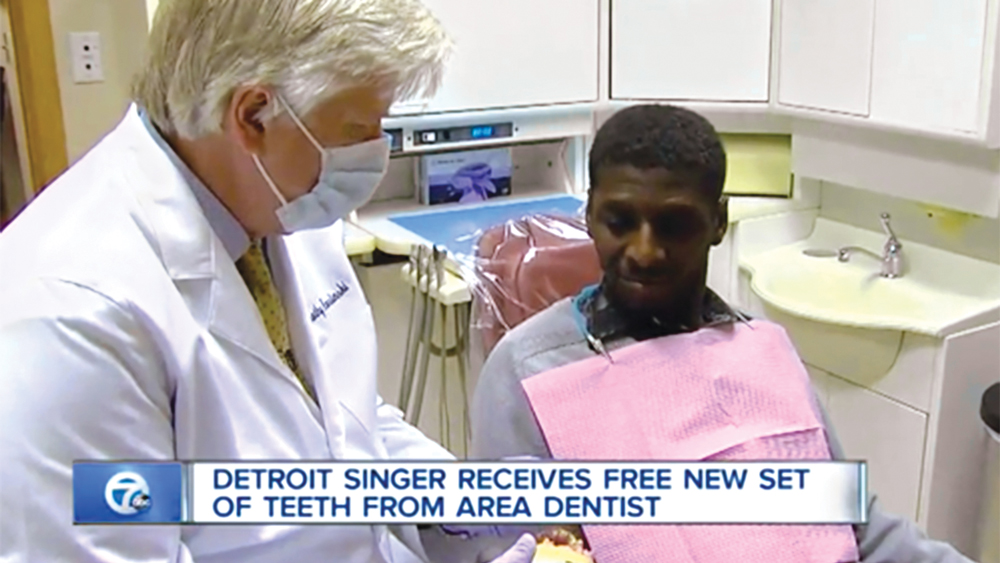
The camera rolled as I discussed treatment options with Carl, with the goal of placing Hahn Tapered Implants and restoring both the maxillary and mandibular arches with the cementable full-arch BruxZir bridge over Inclusive custom abutments.
During my first meeting with Carl, he was deeply appreciative for anything that could be provided and never asked for anything specific. But because Carl was a professional singer, I wanted the results to provide the best function and esthetics possible. Because the dental lab plays an integral role in the restorative process, I approached the experienced team at Glidewell Laboratories, whom I’ve worked with for many years and hold in high regard. When I told them about this charitable undertaking, they were happy to help me design and restore the case. We decided to place as many implants as the bone would allow to support fixed full-arch implant bridges. The cementable full-arch BruxZir® bridge over Inclusive® Custom Implant Abutments is an excellent option for patients like Carl, providing a fixed, lifelike full-arch restoration that emerges from the soft tissue in the manner of traditional bridgework.
THE FOREFRONT OF DENTAL TECHNOLOGY
I’ve seen many changes in implant dentistry since 1985, the year I began my dental implant career. Certainly, our implant procedures were once very challenging, and even mysterious. But as technology improved dramatically, so did our surgical armamentarium and implant designs, and our success increased. Today’s advanced technology enabled me to virtually design Carl’s case prior to surgical intervention. I performed CBCT scanning and analysis, and virtually placed the implants utilizing digital treatment planning software. This allowed me to identify which implant types and sizes to use, as well as the precise positioning needed to optimize the final result. A surgical guide was produced to control the trajectory of the implant osteotomies in the maxilla. It was determined that the mandibular bone contours following tooth extraction would allow for placement of the implants into the socket sites without the use of a surgical guide. My goal was to restore both of Carl’s arches with fixed implant-supported BruxZir bridges, which would not only allow for the most natural function and highest level of prosthetic stability and comfort, but also provide him with the smile that he deserved and self-assurance when performing as a musician.
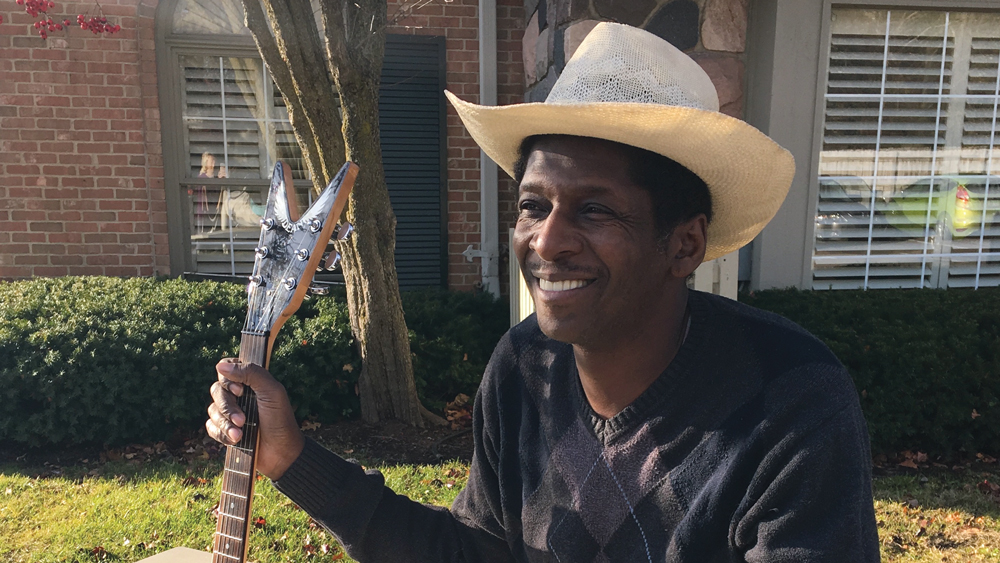
"Dr. Kosinski and his team were awesome ... The final teeth are amazing. I can chew just about anything I want; maybe I'm even a better singer. I can smile again!"
– Carl Brooks, musician
To begin treatment, I atraumatically removed the non-restorable teeth. I immediately placed Hahn™ Tapered Implants (Glidewell Direct; Irvine, Calif.), including nine in the maxilla and seven in the mandible, achieving excellent primary stability. The sockets were filled with regenerative material. Following integration of the implants, healing of the extraction sockets and VPS impressions, a full-arch try-in bridge was produced and seated over custom titanium abutments. After making minor adjustments, maxillary and mandibular BruxZir bridges were fabricated and delivered. I have tremendous confidence in the esthetics and wear characteristics of the BruxZir material. Because it’s monolithic zirconia, there’s no concern of ceramic fracture. I have been using this material since its inception and have been impressed with the results accomplished in full-arch reconstruction cases.
MAKING A DIFFERENCE
At the end of the dental transformation, Alicia was anxious to conduct a follow-up story on Carl to share how his life had changed since receiving, as she called it, “the gift of a smile.” It was extremely rewarding to watch that second report on the news and hear Carl’s heartfelt interview comments following the replacement of his untreatable teeth, which offered a reminder that we as dentists have the ability to make a small difference in this world.
Carl was modest and would have been appreciative of any treatment provided to him. We certainly could have done less and still rescued him from dental distress. It is gratifying, however, to provide him with an outstanding restoration: fixed implant-supported BruxZir bridges that look, feel and function like natural teeth. The digitally designed Inclusive custom abutments allowed me to establish precise gingival margins and the prosthetic positioning needed for an exceptionally lifelike restoration.
Although it didn’t happen overnight, this process has given Carl a renewed quality of life. But something somewhat unexpected about his dental makeover was the emotional response from his daughter Rheanon. She was so delighted to see her father’s improved confidence and remarkable transformation that she now wants to become a dental hygienist so she can help others like her dad. I owe it all to Lila, who first noticed Carl and took that initial step to call me. Without her compassion, none of this would have been accomplished.
PHOTO ESSAY: DISCOVER HOW DR. KOSINSKI ACCOMPLISHED CARL'S DUAL-ARCH RECONSTRUCTION
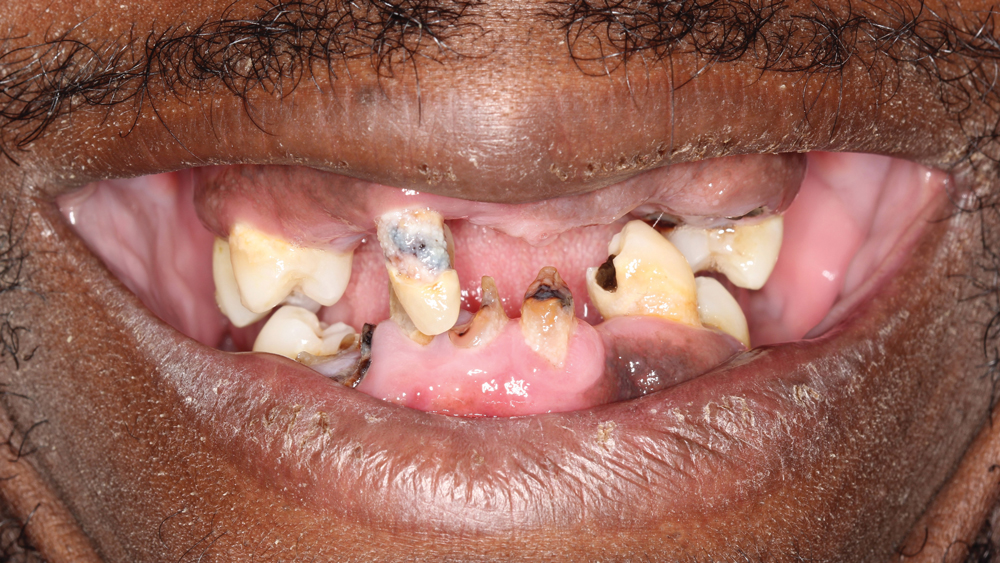
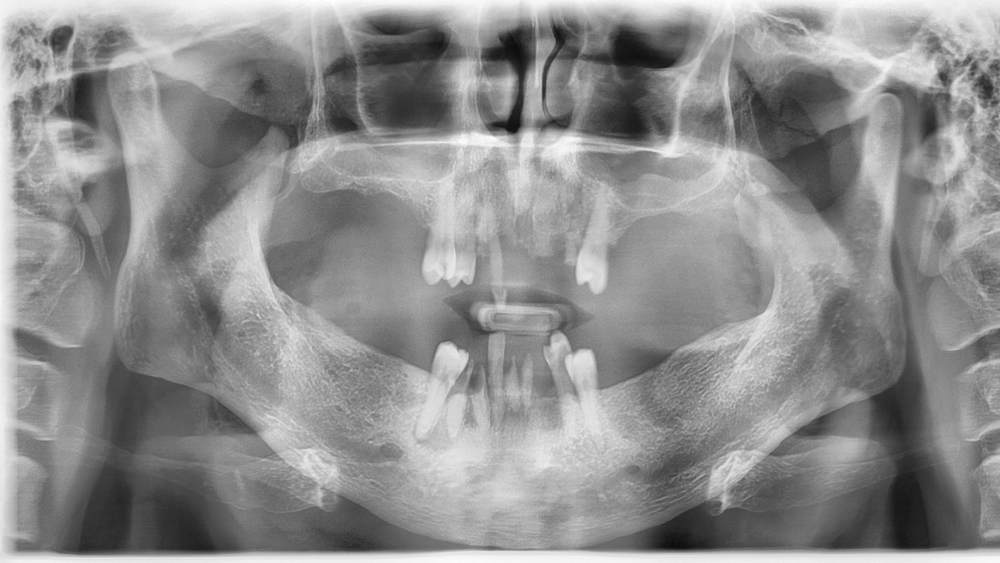
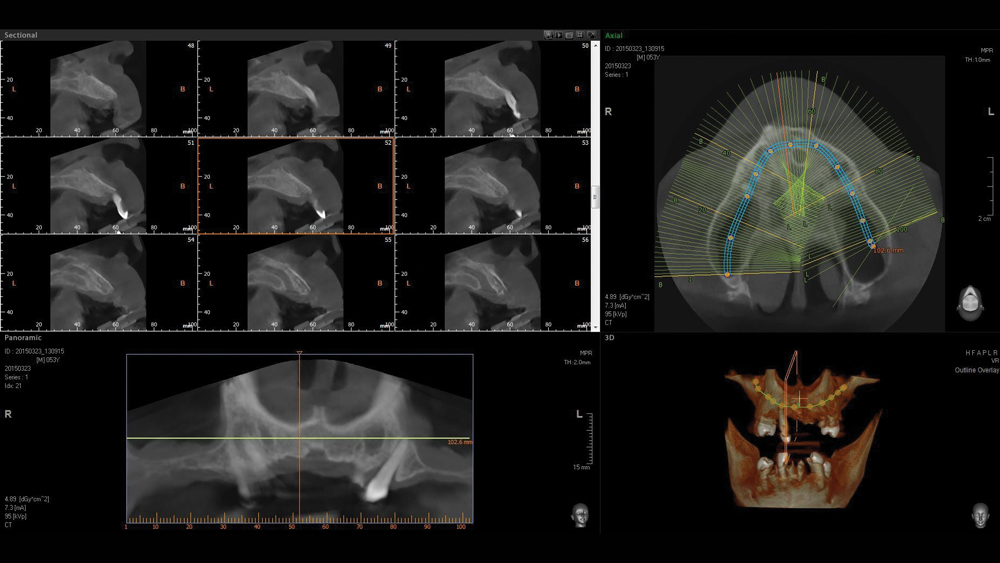
Figures 1a–1c: Carl’s preoperative smile and panoramic radiograph illustrate the non-restorable state of his maxillary and mandibular teeth. CBCT scans performed with the PaX-i3D Green imaging system (VATECH America Inc.; Fort Lee, N.J.) helped to analyze the volume of bone available for dental implants.
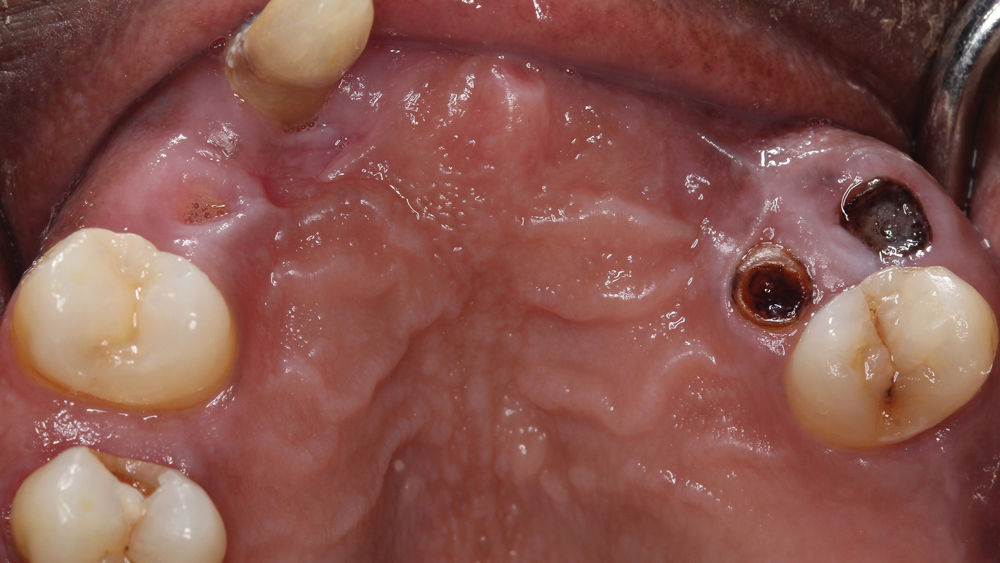

Figures 2a, 2b: Occlusal view of non-restorable teeth. Following development of a digital treatment plan, including determination of ideal implant positioning, a surgical guide was made to control the depth and angulation of the maxillary dental implants.
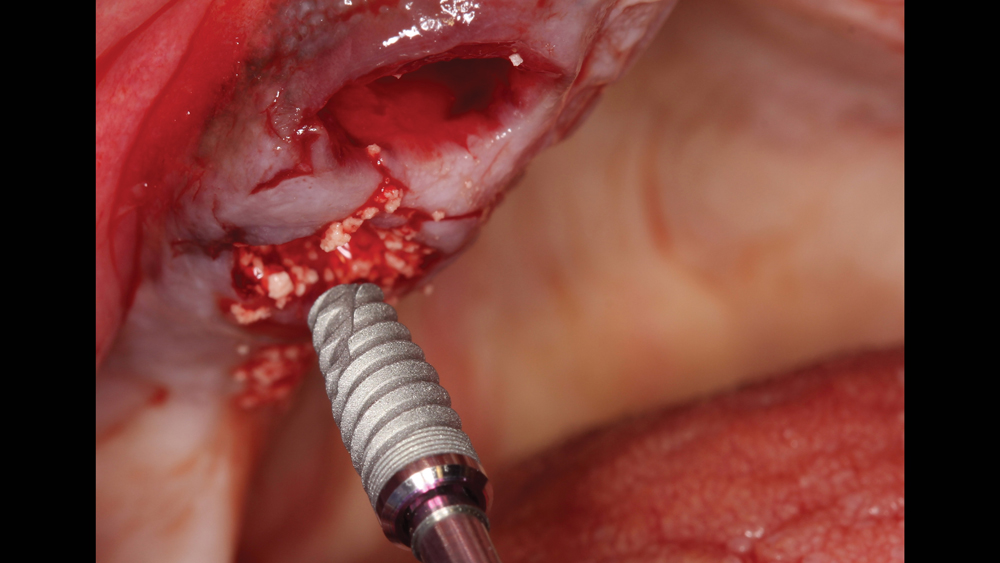
Figure 3: Following maxillary tooth extractions, implant osteotomies were created through the surgical guide, the sockets were filled with allograft material and Hahn Tapered Implants were threaded into place.
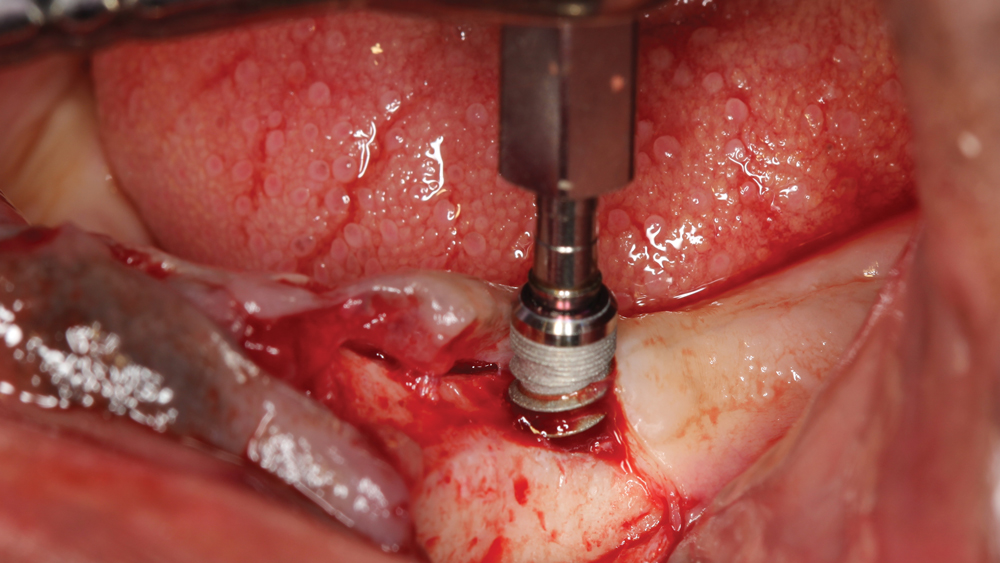
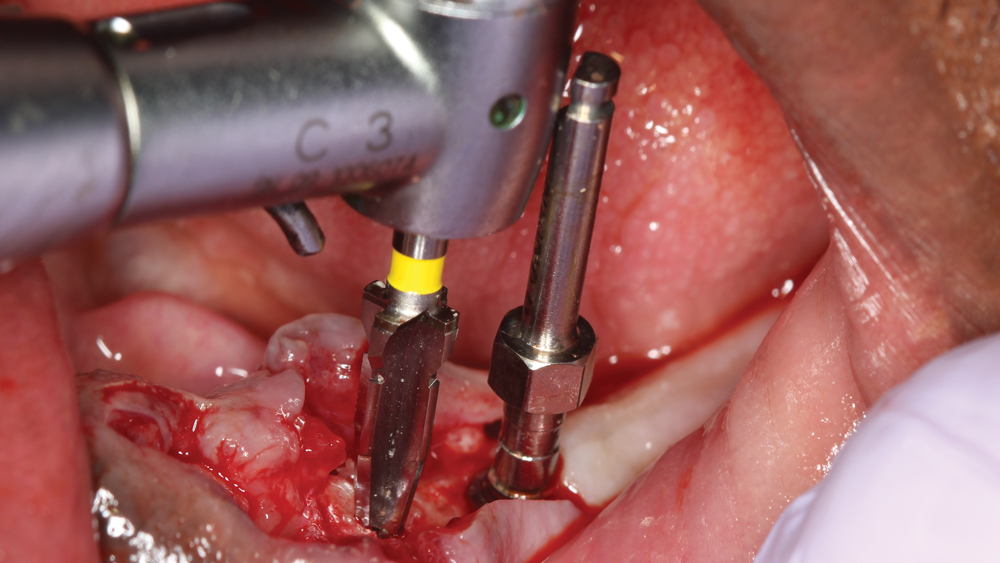
Figures 4a, 4b: The untreatable mandibular teeth were removed, and Hahn Tapered Implants were placed in parallel position.
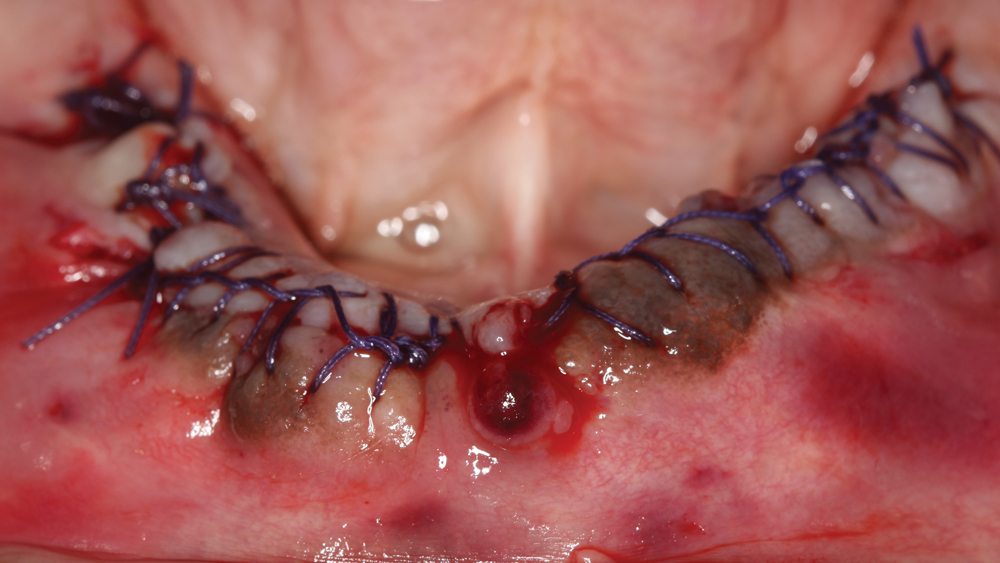
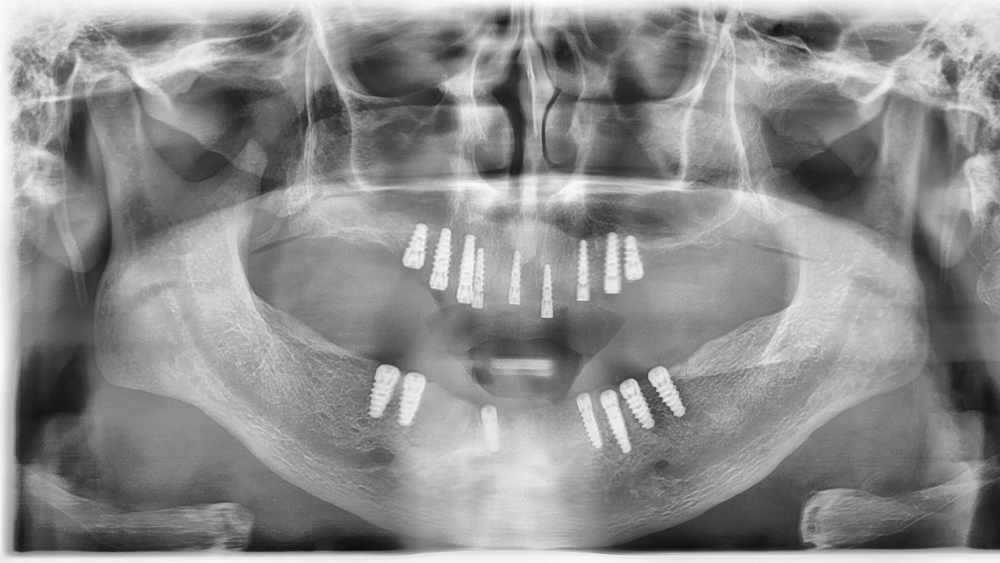
Figures 5a, 5b: After mandibular implant placement, the sites were sutured. The postoperative panoramic radiograph illustrates the maxillary and mandibular implants in final position.

Figure 6: Immediate conventional dentures were seated following implant placement.
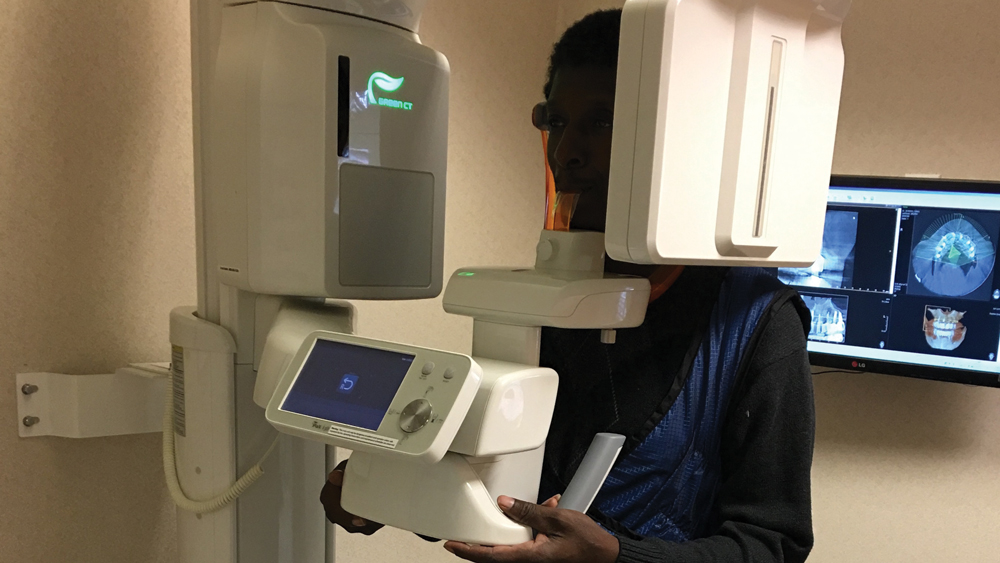
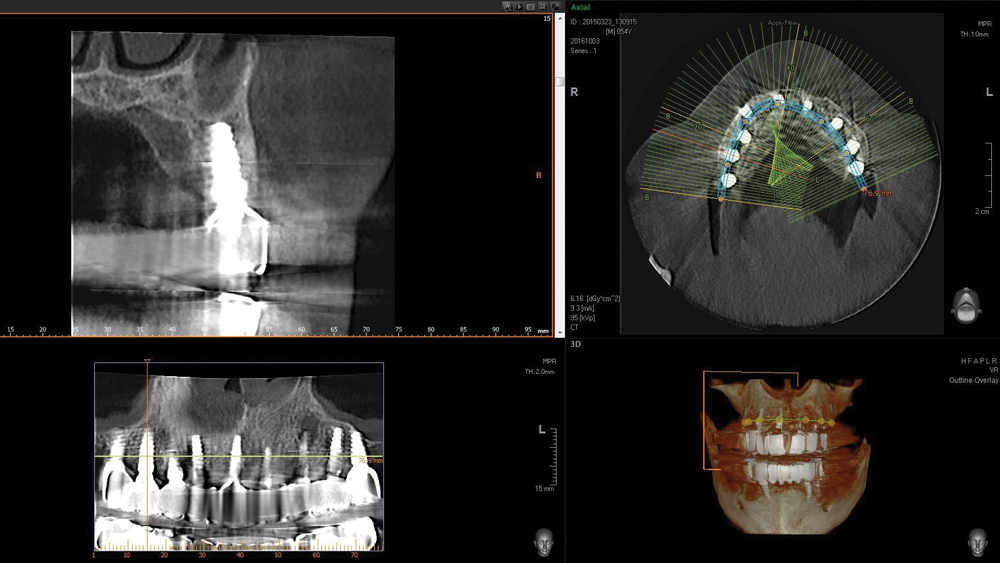
Figures 7a, 7b: Following approximately four months of integration, CBCT scanning exhibited ideal healing of the implant sites.
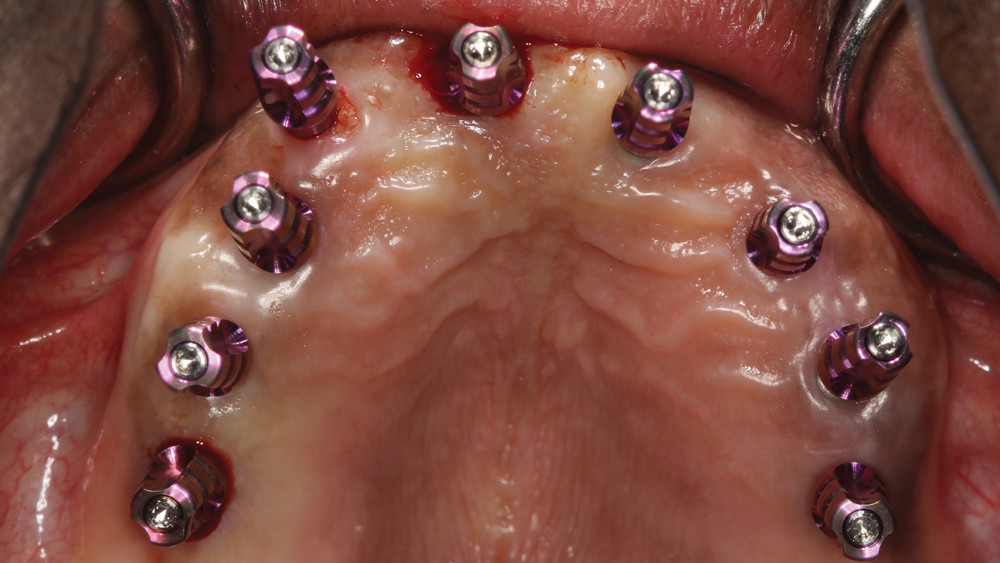
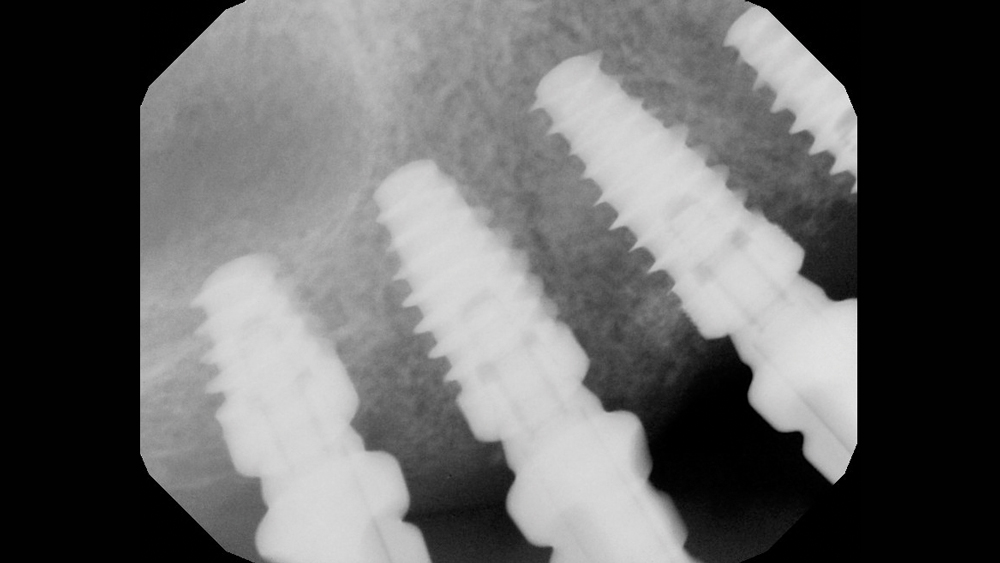
Figures 8a, 8b: Transfer copings were connected to the implants, and VPS impressions were made. A digital radiograph confirmed that the impression copings were fully seated.
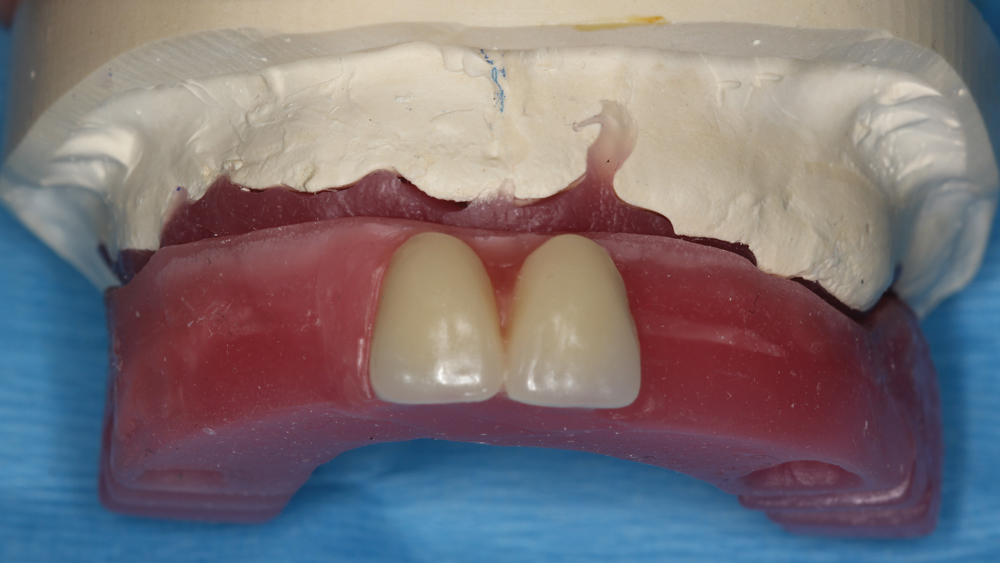
Figure 9: Screw-retained wax rims were used to determine the VDO, bite and jaw relationship.
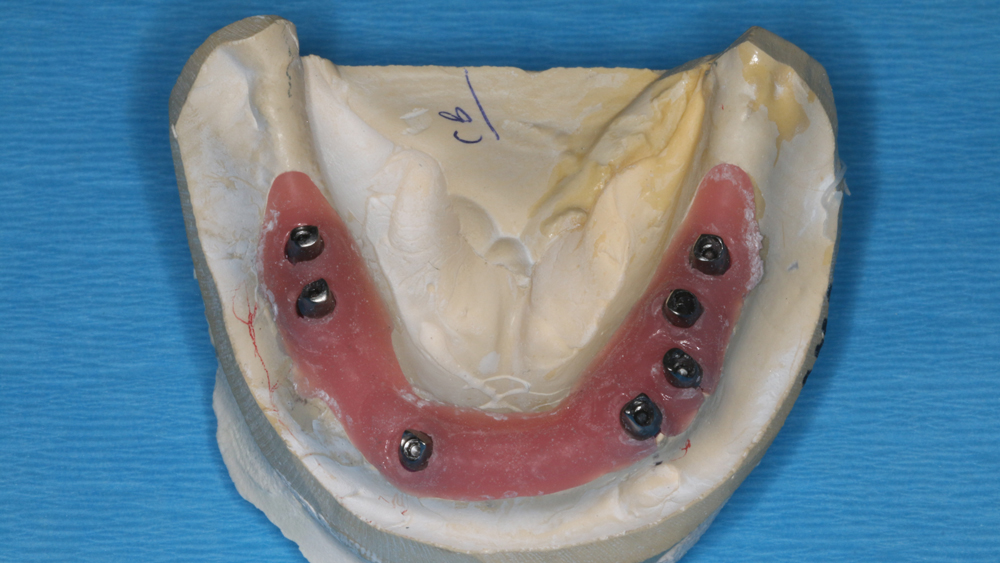
Figure 10: Custom abutments were created with margins at or just below the gingival surface to protect long-term soft-tissue health and prevent cement from extruding subgingivally.
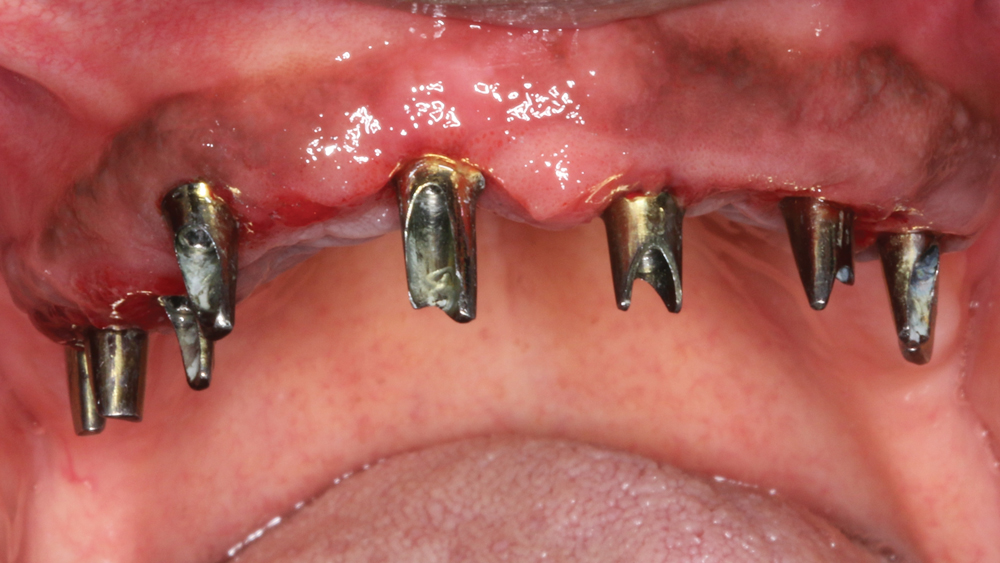
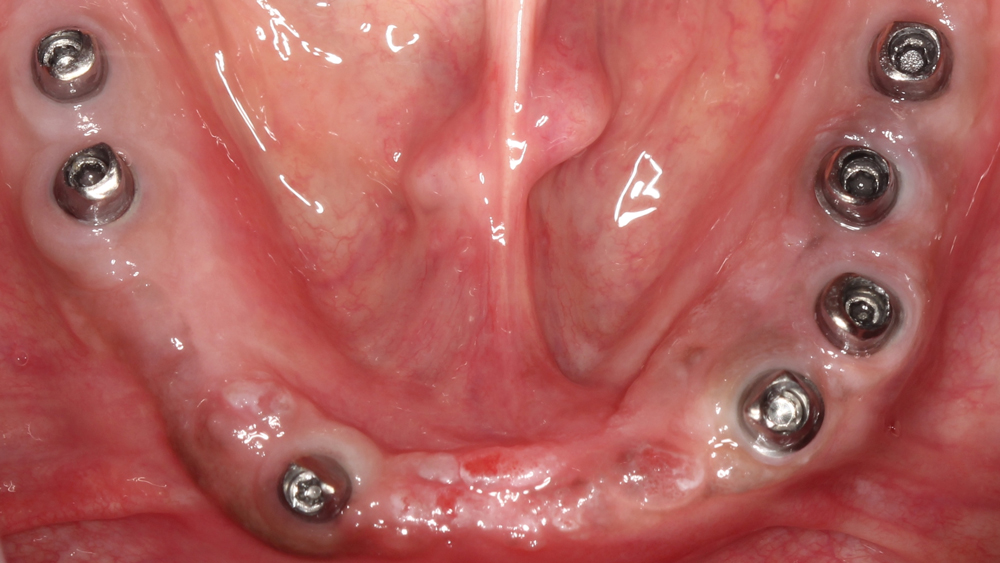
Figures 11a, 11b: Maxillary and mandibular custom abutments in position.
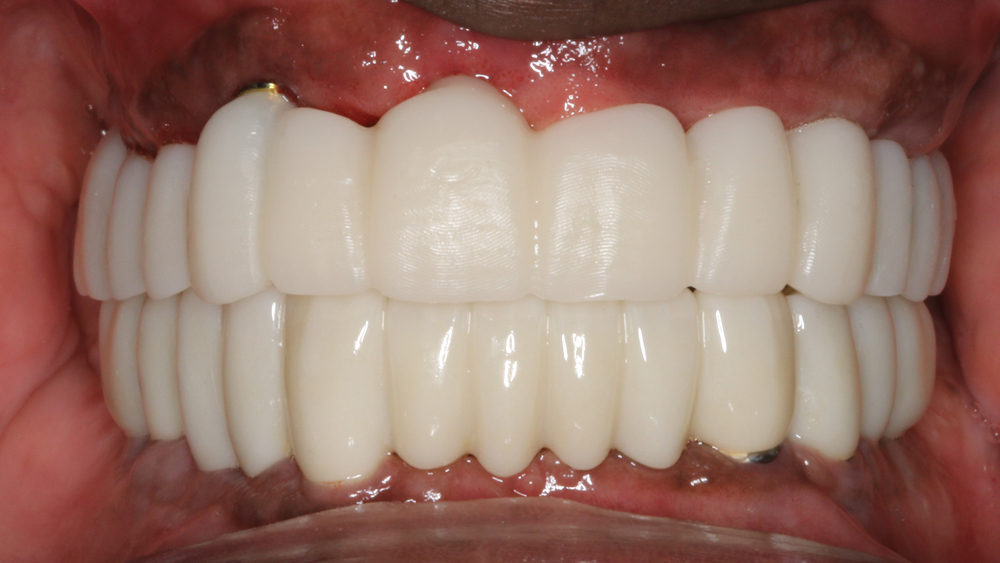
Figure 12: PMMA try-in bridges were made to establish proper esthetics, function and comfort. Because the patient was over-closed preoperatively, the full-arch try-in bridges were critical in allowing Carl to evaluate the prosthetic design prior to fabrication of the final BruxZir restorations. Minor modifications were easily made to the PMMA and incorporated in the final designs.

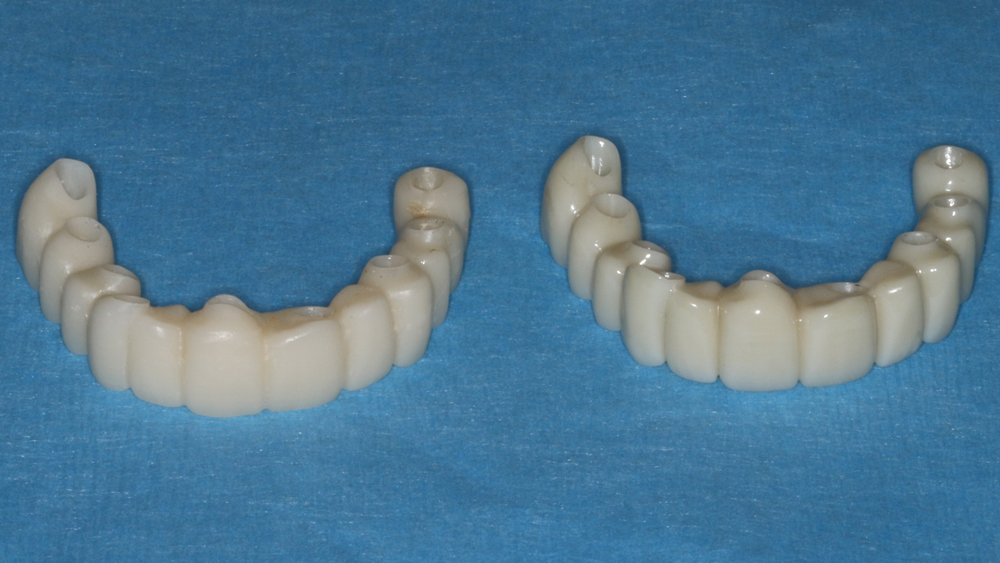
Figures 13a, 13b: Tissue response was positive. After Carl approved each provisional appliance, the designs were replicated in the fabrication of the final BruxZir bridge.
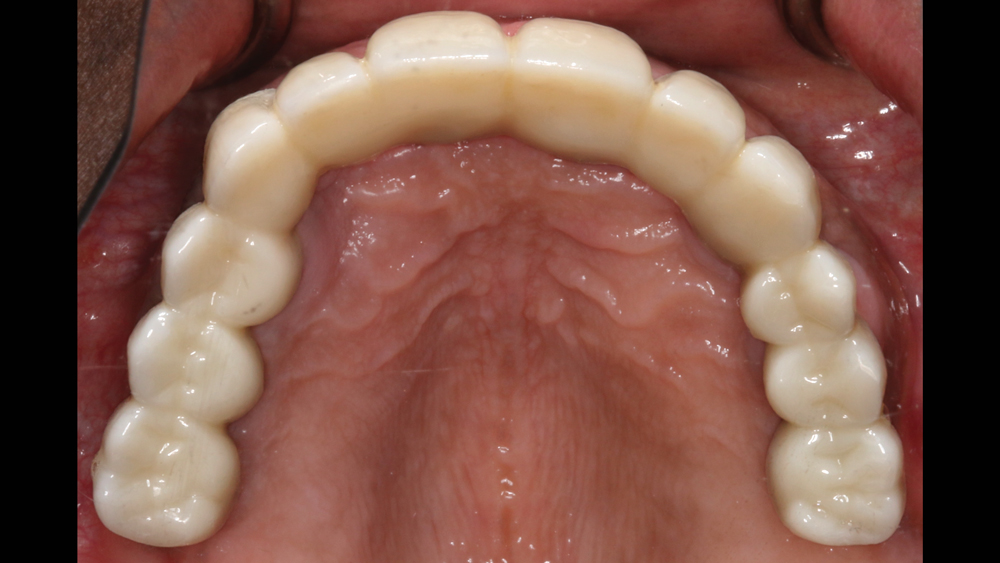
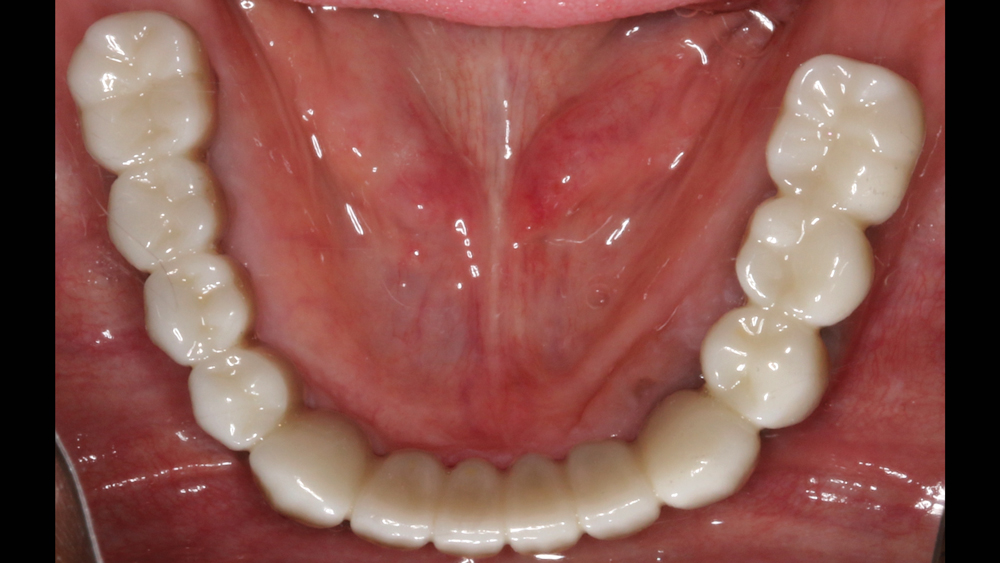
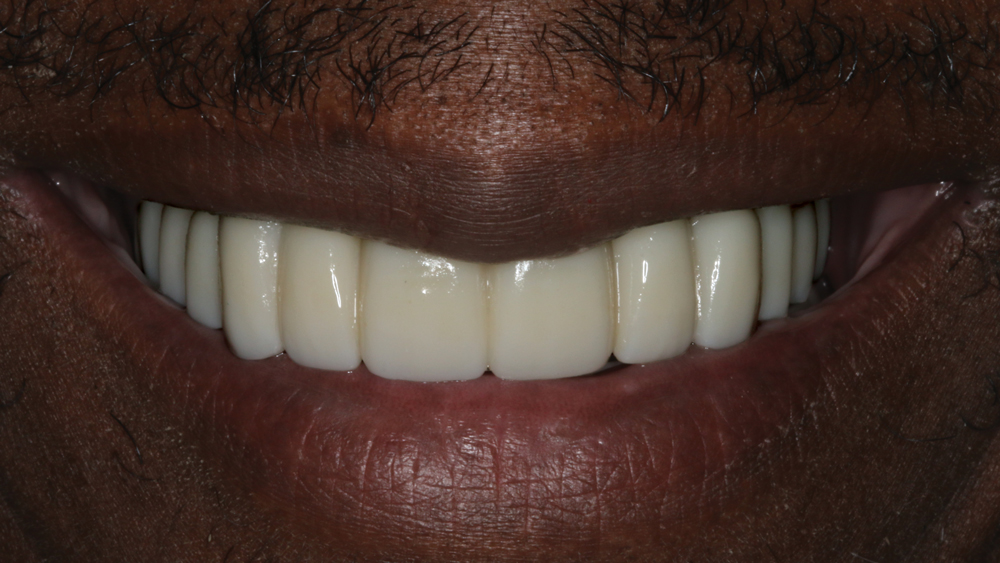
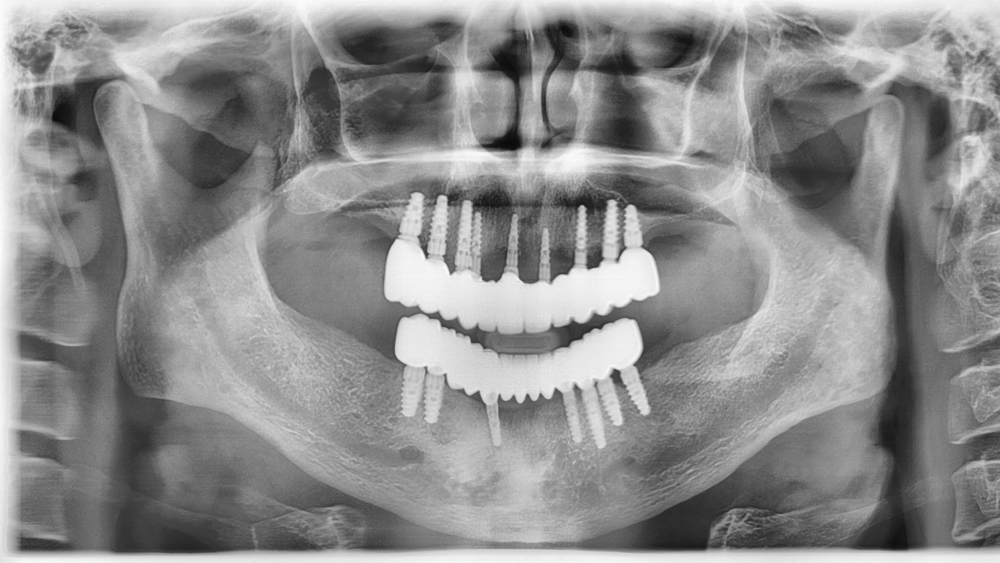
Figures 14a–14d: The cementable BruxZir bridges were passively seated, and the final panoramic radiograph verified proper prosthetic positioning.
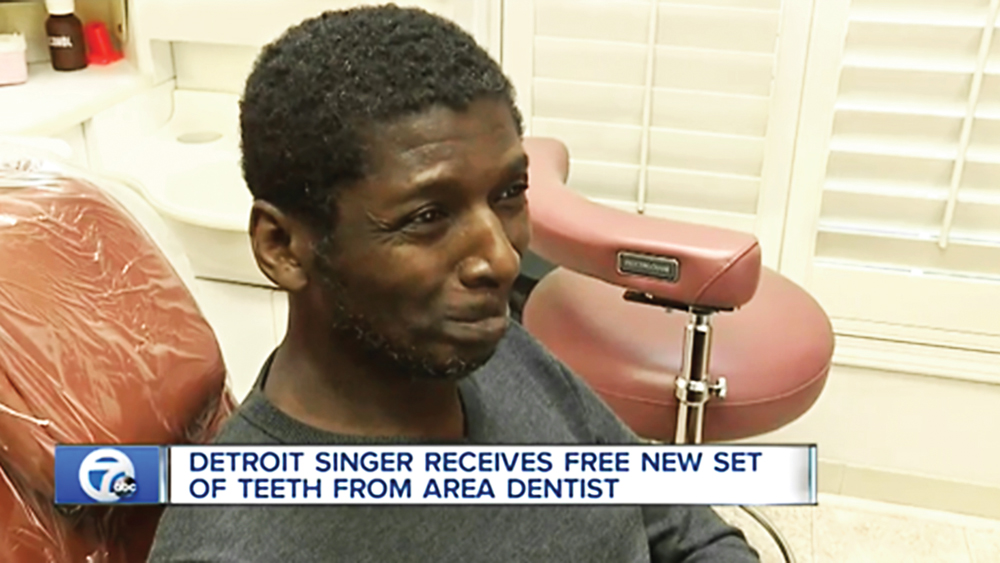
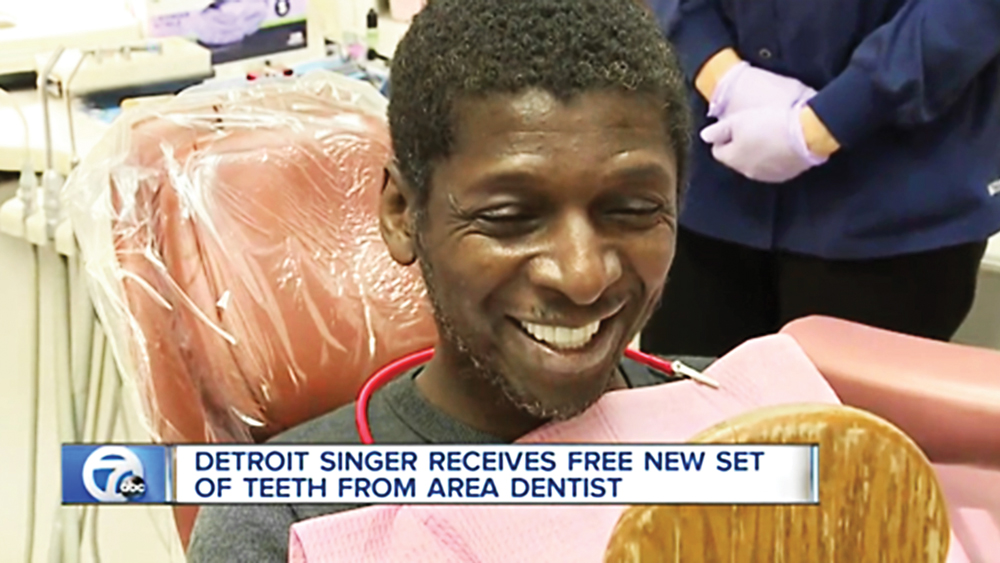
Figures 15a, 15b: After spending countless years hiding his smile, Carl was finally able to enjoy prostheses that mirror the comfort, appearance and function of natural teeth.
References
- Broadcast photos courtesy of WXYZ-TV Channel 7 (Southfield, Mich.).

